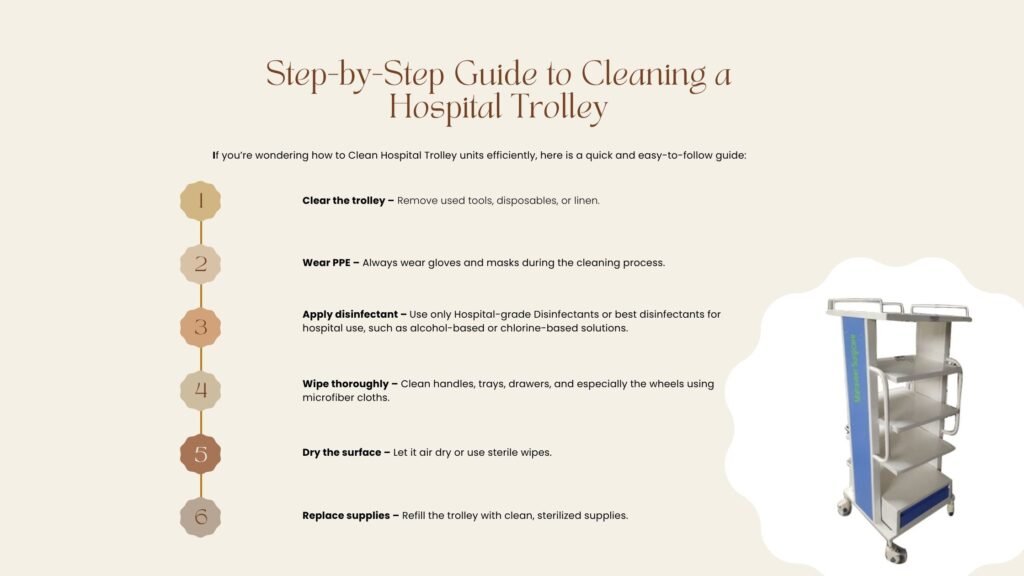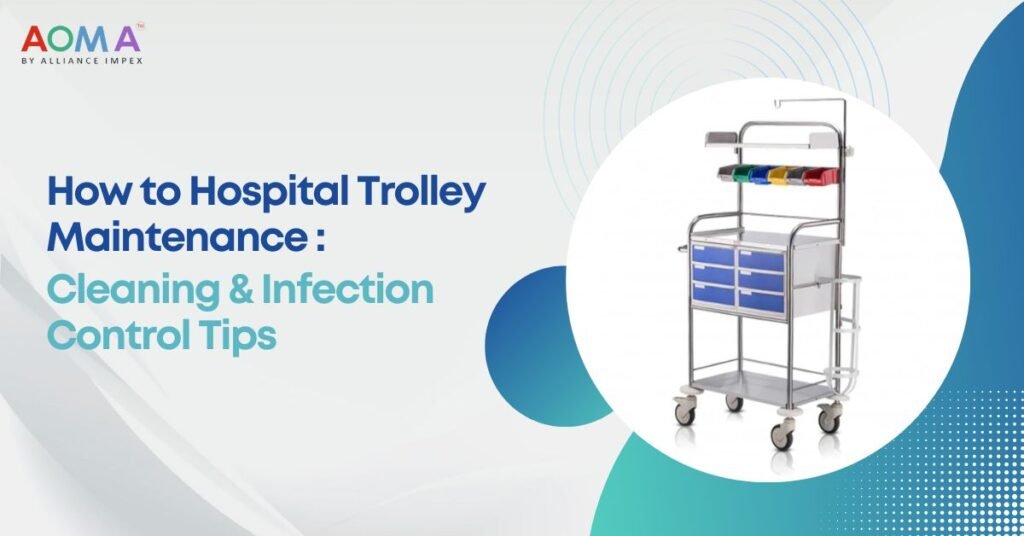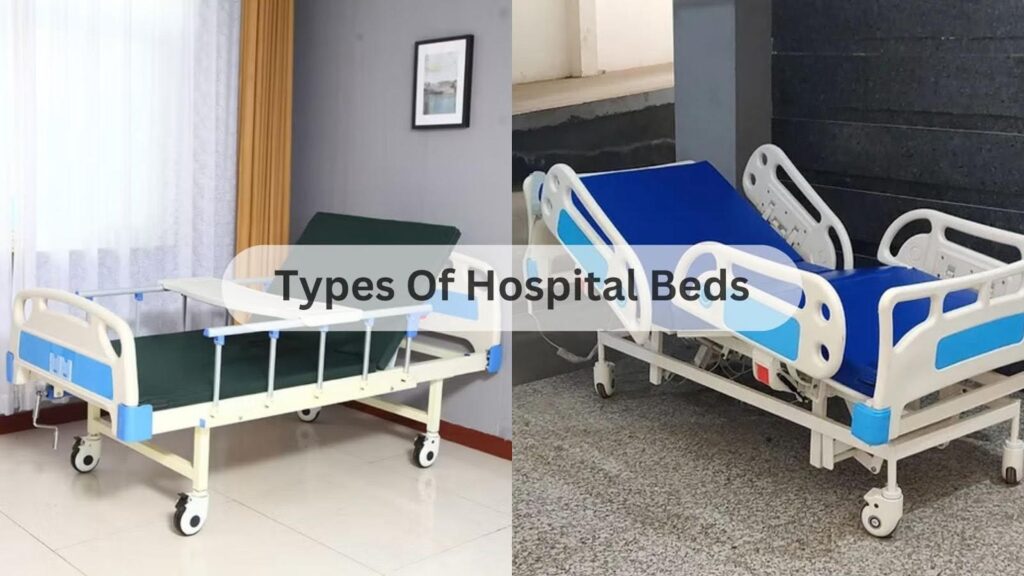Infection control is one of the most crucial aspects of hospital operations. Every item in a healthcare facility, from diagnostic equipment to hospital trolleys, must be properly cleaned to reduce the risk of infection. Among these, Hospital Trolleys are constantly used to transport supplies, medication, and sometimes even patient samples, making them highly exposed to contaminants.
In this blog, we’ll walk you through essential Hospital Trolley Maintenance practices, expert-recommended sanitization tips, and how your hospital can ensure the highest hygiene standards without overcomplicating the process.
Why Cleaning Hospital Trolleys Matters
Hospital trolleys are mobile, multipurpose units used across wards, ICUs, and operating theatres. Because they travel between different rooms and departments, they often come into contact with bacteria, viruses, and bodily fluids. If not cleaned regularly, these trolleys can become a source of cross-contamination.
Proper Hospital Trolley Maintenance not only confirms patient safety but also protects healthcare workers and supports infection control guidelines recommended by health authorities.
Daily vs. Deep Cleaning – What’s the Difference?
Daily cleaning refers to the routine wiping of surfaces, handles, and trays using Hospital-grade Disinfectants. It helps eliminate immediate contaminants and is essential for maintaining hygiene in high-touch areas. Daily cleaning is a key part of every hospital’s cleaning procedures.
Deep cleaning, on the other hand, is a more thorough process. It involves disassembling movable parts, cleaning underneath the trays, checking for rust or damage, and using a more intense disinfection process. This may be done weekly or bi-weekly, depending on how frequently the trolley is used.
By understanding the difference between routine sanitization and detailed disinfection, hospitals can implement both processes effectively to ensure proper Maintenance of Hospital Trolleys.
Step-by-Step Guide to Cleaning a Hospital Trolley
If you’re wondering how to Clean Hospital Trolley units efficiently, here is a quick and easy-to-follow guide:

- Clear the trolley – Remove used tools, disposables, or linen.
- Wear PPE – Always wear gloves and masks during the cleaning process.
- Apply disinfectant – Use only Hospital-grade Disinfectants or best disinfectants for hospital use, such as alcohol-based or chlorine-based solutions.
- Wipe thoroughly – Clean handles, trays, drawers, and especially the wheels using microfiber cloths.
- Dry the surface – Let it air dry or use sterile wipes.
- Replace supplies – Refill the trolley with clean, sterilized supplies.
This routine should be part of your Hospital Trolley Sanitization tips checklist and followed at every shift change, or after a high-risk case.
Common Mistakes to Avoid During Trolley Sanitization
Even well-meaning staff can make errors while cleaning trolleys. Below are some common issues:
- Using scented or household cleaners instead of Medical-Grade Disinfectants
- Skipping the Trolley Wheels and Handle Cleaning, which are high-touch points
- Not wearing gloves or PPE while disinfecting
- Infrequent cleaning, especially in emergency wards or during high patient turnover
- Ignoring corners and the undersides of trays during the cleaning process
By avoiding these mistakes, you align your process with industry best practices and improve infection control in hospitals.
Best Practices for Infection Control in Hospitals
Implementing an efficient cleaning system goes beyond just having disinfectants in stock. Here’s how hospitals can confirm better infection prevention:
- Train staff regularly on Safe Hospital Hygiene Practices
- Create a Hospital Cleaning Procedures chart in every department
- Conduct random audits and maintain a sanitization checklist
- Use color-coded cloths for different departments to avoid cross-contamination
- Invest in the Best Disinfectants for Hospital use, like alcohol solutions, hydrogen peroxide-based products, or sodium hypochlorite
These habits are especially important if your goal is to prevent infection in hospitals without additional expenses.
Recommended Disinfectants and Tools
For effective cleaning of trolleys, here are some recommended items:
- Alcohol-based disinfectants (at least 70%) – Quick drying and effective
- Chlorine-based solutions – Ideal for deep cleaning and blood spills
- Disposable microfiber cloths – Prevent cross-use contamination
- Gloves and aprons – Essential for all cleaning staff
Choosing the right tools and supplies makes a big difference in overall Hospital Trolley Sanitization.
Final Thoughts on Hospital Trolley Maintenance and Infection Control
Maintaining and sanitizing hospital trolleys may seem minor, but Hospital Trolley Maintenance is a crucial part of infection control. Regular cleaning, proper disinfectants, and trained staff help prevent the spread of harmful germs. A clean trolley means a safer environment for both patients and healthcare providers.
By following standard cleaning procedures and using the right tools, hospitals can reduce infection risks significantly. It’s a small effort that makes a big difference in patient safety and care quality.
FAQs: Hospital Trolley Maintenance
Q1: How often should hospital trolleys be sanitized?
At a minimum, once per shift (every 8 hours). High-traffic areas may require more frequent cleaning.
Q2: Which disinfectant is best for hospital trolley cleaning?
Alcohol-based and chlorine-based disinfectants are the most effective and recommended by global health organizations.
Q3: What are the common risks if trolleys are not cleaned properly?
Poorly cleaned trolleys can cause cross-contamination, HAIs (Hospital-Acquired Infections), and damage a hospital’s hygiene record.
Q4: Should trolleys be cleaned between each patient use?
Yes, especially when used in ICUs, OT, or for transporting medical instruments.




